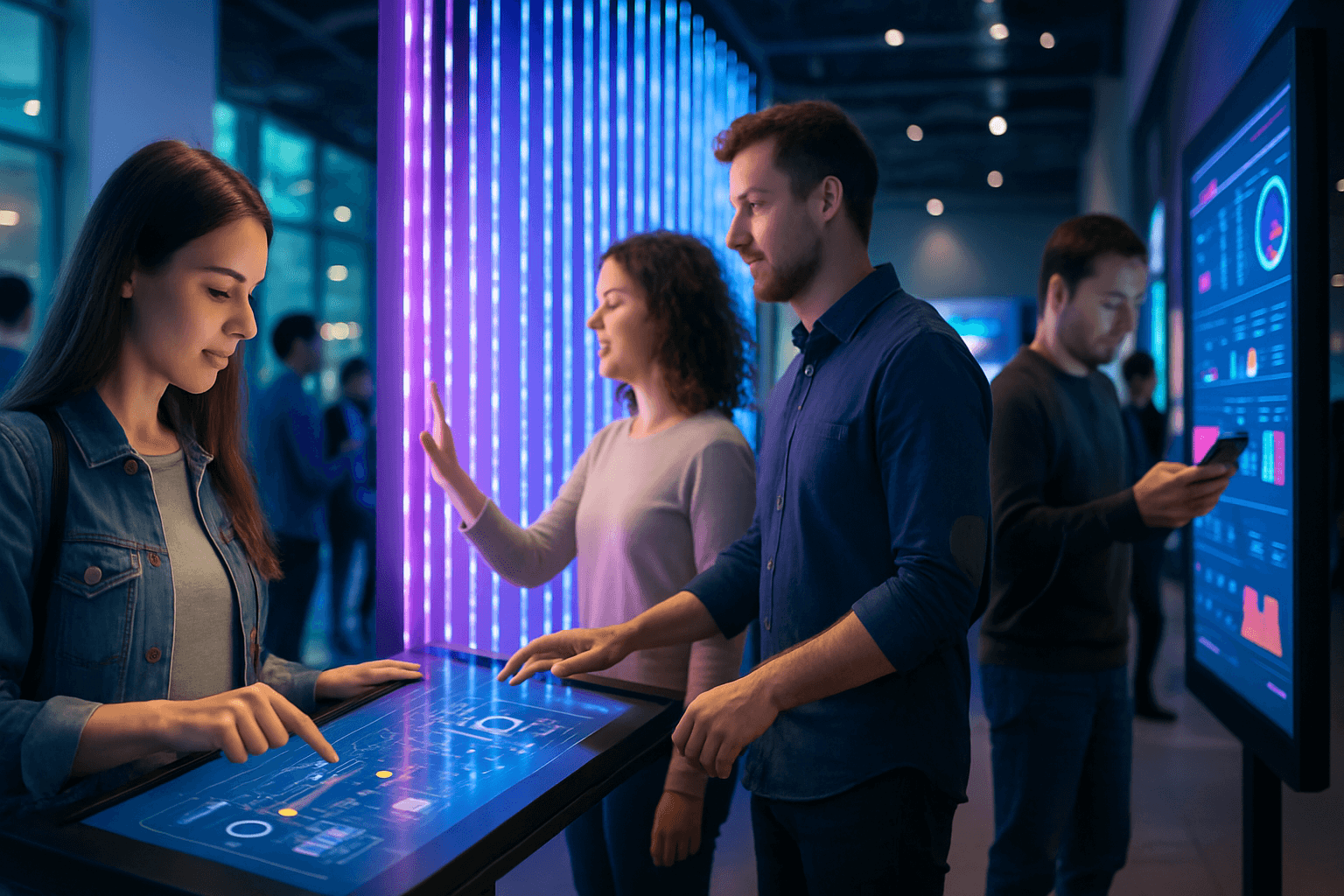In the modern age of event planning, interactive technology is playing a pivotal role in transforming how attendees engage with events. By incorporating various forms of interactive technology, organizers can create memorable experiences that resonate with participants long after the event concludes. Here’s how interactive technology is enhancing event experiences.
Enhancing Engagement through AR and VR
Immersive Realities
Augmented Reality (AR) and Virtual Reality (VR) are at the forefront of engaging attendees in immersive experiences.
- Virtual Reality Zones: Create dedicated areas where participants can don VR headsets and step into entirely different realities, from virtual offices to adventure scenarios that are both entertaining and informative.
- Augmented Interactions: Use AR apps to unlock hidden layers of information or interactive elements at the event, allowing attendees to engage dynamically with displays, exhibits, or even speakers.
Interactive Exhibits
Interactive exhibits that engage attendees on multiple sensory levels can drive deeper connections.
- Gamification: Introduce gamified elements to exhibits, rewarding attendees for exploring different stations or completing challenges. This can be facilitated through mobile apps or interactive displays.
- Live Demonstrations: Engage attendees with live demonstrations that permit direct interaction, such as hands-on activities where participants can learn new skills or explore products in real-time.
Smart Technology for Personalized Experiences
Tailored Content Delivery
Leveraging smart technology enables organizers to deliver content that is uniquely personalized to each attendee.
- AI-Powered Matchmaking: Implement AI to connect attendees with shared interests, facilitating more meaningful networking opportunities and personalized interactions.
- Customizable Agendas: Provide platforms that allow guests to create customized schedules based on their interests, ensuring they attend sessions and activities relevant to them.
Real-Time Engagement Tools
Interactive technology can facilitate real-time engagement and feedback.
- Live Polling and Q&A: Enable attendees to participate in real-time discussions and polls during presentations or workshops, fostering a dynamic interaction between speakers and the audience.
- Instant Feedback Mechanisms: Utilize apps that collect instant feedback from attendees about sessions and experiences, providing valuable insights to improve future events.
Streamlining Logistics with Interactive Tools
Efficient Resource Management
Interactive technology can streamline the logistical side of event planning.
- Interactive Maps: Provide attendees with digital maps of the venue that offer navigation assistance, helping them locate sessions, booths, or specific amenities easily.
- RFID and NFC Technologies: Implement RFID wristbands or NFC-enabled badges that allow for seamless check-ins, access control, and data tracking, optimizing the flow of attendees through the event.
Data Analytics for Event Insights
Collecting and analyzing data through interactive technologies helps improve event outcomes.
- Behavior Monitoring: Use analytics tools to monitor attendee behavior, such as which sessions had the highest engagement, helping organizers assess what works best.
- Post-Event Analytics: Compile data from various interactive tools to generate comprehensive reports that highlight successes and areas for improvement, guiding future planning.
Conclusion
Interactive technology is a game-changer in the event industry, offering enhanced engagement, personalized experiences, and efficient logistical management. By embracing these tools, event organizers can create powerful interactions that foster lasting connections and unforgettable experiences. As technology continues to advance, integrating innovative solutions will be essential for staying ahead in the competitive landscape of event planning.

Hello There. I found your blog using msn. This is a really well written article. I’ll make sure to bookmark it and return to read more of your useful info. Thanks for the post. I will definitely return.
Obrigado!